International Journal of Agricultural Science and Food Technology
IoT-based winter season crop prediction using machine learning on Vyas municipality ward No-13, Nepal
Deepak Pantha*
Cite this as
Pantha D (2023) IoT-based winter season crop prediction using machine learning on Vyas municipality ward No-13, Nepal. Int J Agric Sc Food Technol 9(3): 076-086. DOI: 10.17352/2455-815X.000196Copyright License
© 2023 Pantha D. This is an open-access article distributed under the terms of the Creative Commons Attribution License, which permits unrestricted use, distribution, and reproduction in any medium, provided the original author and source are credited.The agricultural system in Nepal is facing a decline primarily due to its traditional practices. Farmers’ morale is low as they invest significant effort but yield low production, leading to an exodus of young people seeking opportunities abroad. While Nepal is often depicted as an agricultural country in literature, the reality falls short. Improving productivity is crucial, and this can be achieved by enhancing labor efficiency and increasing arable land fertility. To address these challenges, the concept of smart agriculture has emerged, and implementing an IoT-based agricultural system could help manage the workforce and retain skilled youth in their homeland. The main objectives of the study were to develop a monitoring system for arable land using IoT and to predict and recommend suitable crops using machine learning. Due to constraints in time and resources, the study focused on Vyas Municipality Ward no-13 in the Tanahun district. Sensor devices were deployed in the selected ward, and data was collected four times a day at half-hour intervals, monitoring key parameters like Humidity, Temperature, Rainfall, and Soil moisture. In this research, Orange, Ginger, Onion, and Spinach are the main crops predicted and recommended suitable times. In conclusion, the implementation of IoT-based agricultural systems and Machine Learning algorithms can offer valuable insights to farmers, enabling them to make informed decisions regarding crop selection and cultivation timing. This could potentially revitalize Nepal’s agricultural sector and reduce the trend of young people leaving the country in search of better opportunities.
Introduction
If the agricultural system cannot be managed in time and made attractive to all, we can all estimate the possibility of an agricultural recession. In developed countries, there is work to manage the agricultural system. With the use of technology in agriculture, now the retention of smart in agriculture is slowly starting. In a country like ours where there are various problems such as political problems, economic problems, geographical problems, and problems of lack of attractiveness in the agricultural profession are causing the decline in the agricultural system. In the traditional farming system, people have to work hard. Similarly, we have to hear the news that some farmers have died due to various pesticides. It seems that the attraction of people to the agricultural profession is decreasing due to the fact that the production is much less than the effort and investment of the farmers.
Farmers suffered a lot in the traditional farming system. Farmers were always ready for agricultural work without risking their lives. People’s interest in agriculture started decreasing. Due to the declining interest of people in agriculture, at some point, the crisis in agriculture will start. The main problems in agriculture are that production is much less than investment and labor. IoT in Agriculture If the use of the method can be made effective, there is a possibility of having a positive effect on agriculture.
Nepal is the fourth most vulnerable country with a Global Hunger Index of 21.2% scored indicating various risks and vulnerabilities. Impact of climate change seen on agriculture, forestry, and fisheries. Nepal is a frontline of climate change as 42 districts are classified as food insecure, 21 glacial lakes are potentially dangerous and Nearly 1.9 million people are highly climate vulnerable is dangerous statistical data for future Nepal. Climate-smart agriculture, local institutions, policymakers, adaptation and practices, Programs, policies, and projects are ongoing in Nepal to tackle all of such concerns of impacts of climate change on agriculture, climate, and food security particularly in the context of Nepal [1].
Nepal is the fourth most vulnerable country with a Global Hunger Index of 21.2% scored indicating various risks and vulnerabilities. Impact of climate change seen on agriculture, forestry, and fisheries. Nepal is a frontline of climate change as 42 districts are classified as food insecure, 21 glacial lakes are potentially dangerous and Nearly 1.9 million people are highly climate vulnerable is dangerous statistical data for future Nepal. Changes in rainfall patterns, temperature variation, unseasonal rain, and long drought are some impacts on climate that ultimately impact agriculture systems. Climate Smart Agriculture is an approach for transforming and reorients agricultural systems to support food security under changing environmental conditions. Climate Smart Agriculture promotes only by collaborative actions of smallholder farmers, marginalized groups, policymakers, and other related sectors. This paper bird’s eye views on issues of climate change, Climate-smart agriculture, a local institution, policymakers, adaptation and practices, Programs, policies, and projects ongoing in Nepal to tackle all of such concerns of impacts of climate change in agriculture, climate, food security, particularly in the context of Nepal [1].
The Internet of Things is seen as another information and industrial wave after the invention of personal computers, the Internet, and mobile communication networks [2]. It will become the main driving force of future global economic development. Since 2005, the development wave of the IoT has swept across the world. Many countries have put forward long-term national strategies for the IoT and have entered a substantial implementation period after completing the conceptual stage at the service level [3]. Remotely acquired images through satellites can be accessed and analyzed in their digital form. The advancement in image processing techniques has made remote sensing, along with GIS, progress independently. For better precision farming, an integrated system is used that consists of combining the remote sensing devices and image processing software package [4].
Based on the report obtained using IoT in the hilly area of Nepal, what kind of crop prediction and recommendation can be given? In an underdeveloped country like ours, house construction is being done on arable land day by day. Due to the lack of monitoring technology even on arable land, the decline in agriculture has been brought to a higher level. In addition, this method used to test the environment and soil of arable land is also being brought to the attention of the stakeholders. The main goal of this study is to claim that this method is effective because it is possible to monitor arable land in a short period of time and it is impossible for humans to monitor arable land for 24 hours. The major objectives of this research are to predict and recommendation of crops on arable land of Vyas Municipality Ward No-13 of Nepal by using IoT and machine learning.
Due to limited time and resources, it was impossible to cover all aspects of smart agriculture systems in this research. During the use of IoT in the monitoring system of arable land, the following aspects have been monitored.
- Humidity monitoring system
- Temperature monitoring system
- Raindrop monitoring system
- Soil moisture monitoring system
In this way, only wards 13 and of the municipality have been selected for sample selection. In the same way, the relevant stakeholders of arable land have also been selected from the wards included in the sample collection, and their complete details have been included in the research method, i.e. unit, in their sample collection.
This research contribution on an IoT-based arable land and crop prediction and recommendation can have significant practical implications in the field of agriculture. Improved crop Yield, Efficient water usage, Crop prediction, and personalized recommendations are some potential contributions.
Literature review
The literature review is the most important phase of research. It helps to maturity and confidence in writing and documentation. Some literatures are given.
India is primarily an agricultural country, with more than 70% of the population directly or indirectly involved in crop production. This sector contributes to over 17% of the Gross Domestic Product. Traditional farming methods have limitations, leading to the need for a more advanced and intelligent approach to agriculture using modern technology like the Internet of Things and Machine Learning. The smart agriculture management system is a new technology that automates crop production processes and aids in increasing yield while minimizing resource wastage through precision agriculture. The system employs various sensors to gather data on environmental factors essential for crop production [5].
Smart agriculture is an automated and directed information technology implemented with the IoT. IoT is developing rapidly and is widely applied in all wireless environments. Sensor technology and wireless networks integration of IoT technology has been studied and reviewed based on the actual situation of agricultural systems. A combined approach with internet and wireless communications, Remote Monitoring System is used. The major objective is to collect real-time data on the agriculture production environment that provides easy access for agricultural facilities such as alerts through Short Massaging Service (SMS) and advice on weather patterns, crops, etc. [6].
The implementation of Internet of Things technology has demonstrated its efficacy in enhancing various industries through the introduction of intelligent systems to improve their efficiency. Therefore, cloud computing technology, which offers numerous features and services, is considered the best infrastructure for IoT systems. The use of these technologies has a positive impact on both economics and society. In recent years, the agriculture sector has emerged as a prominent area of research, and IoT applications have rapidly grown in this field as researchers aim to create automated and smarter farms. These IoT applications help farmers stay up-to-date with the latest information and advancements in agriculture. Furthermore, the presence of cloud-based smart applications and models assists farmers in controlling their crops and mitigating issues that may arise due to unsuitable weather conditions or crop diseases. Therefore, IoT applications are conducive to increased crop production and reduced losses. Researchers are focusing on the agriculture domain to create safer farming environments [7].
The application of smart agricultural technology helps developing countries, such as some Egyptian approaches that represent the beginning of the spread of such technology and can help develop the agriculture sector and achieve farm sustainability in those countries. Finally, these smart technologies should be supported by governments in third-world countries at the level of small farms, as they aim to increase production and improve the efficient use of land and water resource [8].
The System has high efficiency and accuracy in fetching the live data of temperature and soil moisture. The IoT-based smart farming System being proposed via this report will assist farmers in increasing the agricultural yield and taking efficient care of food production as the System will always provide a helping hand to farmers for getting accurate live feed of environmental temperature and soil moisture with more than 99% accurate results [9].
This paper is different from the papers presented above. Most of the sensors required for arable land have been used in it. Before writing this paper, the results have been analyzed by directly testing the farmers’ fields. In this research, we can have included hilly areas of Nepal. In hilly areas, there are many challenges to research IoT-based crop prediction and recommendation. I found new ideas and many challenges in the irrigation system.
Methodology
The agricultural land in the sample area has been monitored and a report has been collected through the use of IoT. Based on the data obtained from the data set, a system has been developed that can give the above-mentioned crop prediction recommendation based on the various reports of arable land sampled with the help of machine learning.
Conceptual framework
Various elements have been recognized to enhance the efficiency of IoT and machine learning (Table 1).
Algorithm
Random Forest: In this study, Random Forest Algorithm has been used for the selection of corp. This algorithm is chosen because of its higher accuracy than other algorithms. In a comparative study, Garian NB, Logistic Regression, and Decision Tree can give higher accuracy than Random Forest, so this algorithm is used.
In the case of accuracy improvement, research is done using different attribute split measures and combined functions. The survey has shown that experiments with attribute split measures have not shown significant improvement and further work in this direction needs to be carried out. The weighted voting with Random Forest has shown significant improvements in accuracy. As compared to improvement in accuracy, there is less work done for improvement in performance [10].
Requirement
The successive requirements specify the functions and units of the proposed system. They characterize the behavior of the system relating to necessity.
- Software Requirement: Operating system: Windows 11, Arduino IDE 2.0, and Arduino Libraries for various sensors
- Server: Thing Speak server and Google Colab with Python libraries.
- Programming Language: Python and C++ for Arduino IDE
- Hardware Requirement: Processor: Intel core ™ i5, RAM: 8 GB, and Hard Disk: 500 GB
Requirement of IoT:
Humidity and temperature sensor (DTH 11): This sensor is connected to the breadboard with the help of jumpers only. It is connected to the A3 of the Arduino board. It is programmed and set. It is connected according to the structure given in the Table 2 below.
Rainfall sensor: Arduino board, breadboard, and jumper are only required for connection of the raindrop sensor. While setting its device, it is connected with the help of a breadboard by connecting it from A4 of Arduino. Its connection was made based on the structure in the following Table 3.
Soil moisture sensor: When connecting the soil moisture sensor, only an Arduino board, a breadboard, and a jumper were needed. In its connection, it was connected from A5 of the Arduino board and connected to the breadboard. Its connection was made based on the structure in the following Table 4.
Wi-Fi module (ESP 8266 Wi-Fi module): When connecting the Wi-Fi module sensor, only an Arduino board, a breadboard, and a jumper were needed. In its connection, it was connected from digital 6 and 7 of the Arduino board and connected to the breadboard. Its connection was made based on the structure in the following Table 5.
Arduino mega (Arduino mega 2560 clone): Arduino board is an important device. This is the motherboard of the system. Various necessary sensor devices have been installed in it. The necessary devices are connected to it with the help of various jumpers only and a breadboard. Its connection was made based on the structure in the following Table 6.
Data
Data plays a crucial role in research writing as it is the backbone of any research work. Data provides evidence to support the hypothesis, research question, and objectives of the research.
primary data: Sensor, Field Observations, Interviews, Surveys, and Questionnaires are the main sources of primary data. One of the most common methods of collecting primary data is through sensors. Sensors can be deployed in the field to collect data on various parameters such as soil moisture, temperature, humidity, and rainfall. Sensor data is collected in real-time and transmitted to a cloud server for further analysis. Surveys and questionnaires can be used to collect primary data on factors that are not directly measurable sensors. Surveys can be used to collect data on farmer behavior, crop yield, and farmers’ problem. Field observations can provide valuable insights into the performance of the agriculture land monitoring system and help optimize it for better results. Interviews can be conducted with farmers.
Secondary data: Satellite images, Government recommendation reports, online databases, and research papers are the main sources of secondary data. The government collects data on various aspects of agriculture such as crop yield, soil quality, and weather conditions. This data can be used to analyze trends, predict future crop yields, and optimize the arable land monitoring system. Kaggle is a platform that hosts machine-learning competitions and provides datasets for developers to practice their machine-learning skills. It has several datasets related to agriculture, including crop prediction and crop recommendation. For this study, the file has been downloaded from the Kaggle dataset. There are 2200 reports in this dataset. This CSV file contains reports on humidity, temperature, soil moisture, and rainfall of arable land. This dataset has provided important support.
Area and population
Out of the 14 wards of Vyas Municipality, 1 ward was selected by random sampling method, ward 13 was selected.
In this research, we have selected some stakeholders like Municipality Mayer, Chairman, Farmers, and specialist of agriculture and soil specialist. The details of the stakeholders are given (Table 7).
Validation
The reliability and validity of the study have been assessed through benchmarking. The research involves a comparison between the outcomes produced by various Internet of Things sensors and the outputs generated by manual tools. Additionally, the study includes a comparative analysis of diverse machine-learning algorithms.
IoT vs. manual: A group discussion was conducted for the validation of all the sensor devices used in the research. In the seminar conducted in the presence of the relevant stakeholders, a comparative study was conducted with the report of sensors based on IoT and the report given by analog machines using traditional methods. The same sample was used in this test. Based on the report compiled with the help of group discussion, a comparative study of monitoring systems based on traditional methods and monitoring systems based on IoT has been done as follows (Table 8).
It was seen that sensors based on IoT are not as difficult as traditional methods. The main problem with this method is that it is not possible without electricity and the Internet. There were more advantages than disadvantages in every area.
Based on the time required for testing with the help of group discussion, a comparative study of monitoring systems based on traditional methods and monitoring systems based on IoT has been done as follows (Table 9).
Random forest vs. Gaussian NB vs. Logistic regression vs. Decision tree: Accuracy is a commonly used metric to evaluate the overall performance of a classification model in crop prediction using machine learning. It measures the proportion of correctly classified samples out of the total number of samples (Table 10).
Based on the given results, it appears that the Decision Tree, Gaussian NB, and Random Forest algorithms have performed quite well, achieving high accuracy rates of 98%, 96%, and 98%, respectively. The Logistic Regression algorithm, on the other hand, has achieved a lower accuracy rate of 82%. It’s worth noting that accuracy alone may not be the only metric to consider when evaluating the performance of a model. Other metrics such as precision, recall, and F1 score can provide additional insights into the model’s performance. It may be helpful to conduct additional testing and evaluation of these models before making a final decision (Figure 1).
Result analysis
An arable land monitoring system that leverages the Internet of Things can provide real-time data and insights to farmers, researchers, and policymakers to improve crop yield, reduce waste, and manage resources more efficiently. Environmental impact analysis: By analyzing data on soil quality, crop yield, resource utilization, and weather patterns, the system can assess the environmental impact of farming practices. This can help policymakers make informed decisions on land use and farming regulations.
Result analysis of weather and soil monitoring system
Based on the given data, here is a summary of the observations for each variable at the beginning time of September 17, 2022. The temperature readings range from 20 0C to 24 0C throughout the day. The highest Temperature was recorded at 6:00 PM, while the lowest was at 7:00 AM and 9:00 PM. The humidity readings range from 50% to 82% throughout the day. The highest humidity was recorded at 9:00 PM, while the lowest was at 1:00 PM. The raindrop readings range from 400 to 900 throughout the day. The highest raindrop was recorded at 7:00 AM, while the lowest was at 1:00 PM. The soil moisture readings remained constant at 74% throughout the day (Table 11).
Humidity: The given data represents the humidity levels recorded at a certain location for a period of several months, from September 17, 2022, to April 8, 2023. The humidity levels are reported in percentage and appear to have been recorded on a weekly basis.
A few observations based on the data:
- The humidity levels range from 36% to 94.9%, with a considerable fluctuation throughout the period.
- The highest humidity levels are recorded towards the end of September and in the months of November and December, with a peak value of 94.3% in January 2023.
- The lowest humidity levels are recorded towards the end of February and in the month of March, with a minimum value of 60% in April 2023.
- The data shows some variation in the humidity levels from week to week, with some weeks showing a more significant change than others.
- There is no apparent pattern or trend in the data, and the humidity levels seem to fluctuate randomly.
The data indicates that the humidity level at the location varies considerably over time, with no clear pattern or trend. it is important to note that the data is limited to a specific location and period and may not be representative of other locations or times (Figure 2).
Temperature: The given data contains temperature readings for various dates from September 17, 2022, to April 8, 2023. The temperature readings are given for four different times during the day. Based on the given data, it appears to be a record of temperature readings taken over several months. The data seems to be organized in four columns, with the first column indicating the date and time when the temperature was recorded, and the subsequent three columns indicating the temperature readings for the particular time.
It is worth noting that the temperature readings are given in different units, and it is not clear what the unit of measurement is. without this information, it is difficult to interpret the absolute values of the temperature readings.
However, it is possible to observe some general trends in the data. For example, the temperatures appear to be relatively stable between September and November, with some slight fluctuations. From December onwards, the temperatures begin to decrease steadily until early January. After this point, the temperatures start to increase again, with some significant fluctuations in February and March. finally, in April, the temperatures appear to be relatively high, with some particularly high readings recorded.
It is important to note that without more context, it is difficult to draw a definitive conclusion from this data. The location and conditions under which temperature readings were taken, as well as the purpose for which they were recorded, can have a significant impact on the interpretation of the data (Figure 3).
Rain fall: Based on the given data, it appears to be a record of rainfall measurements over a period of several months. The measurements are given in millimeters and are recorded at different times throughout each week. Here is a summary of the data:
The first measurement was taken on September 17, 2022, and the last measurement was taken on April 8, 2023.
The rainfall amount varies from week to week, with some weeks having higher rainfall than others.
The highest recorded rainfall amount was 1411 mm, which occurred on February 25, 2023.
The lowest recorded rainfall amount was 501 mm, which occurred on September 17, 2022.
There is a general trend of increasing rainfall amounts over time, with the highest amounts occurring in the months of November through February.
It is important to note that this data only provides information about rainfall and does not take into account other factors that could impact weather patterns or the environment. Additionally, the data is limited to a specific location and may not be representative of rainfall patterns in other areas (Figure 4).
Soil moisture: The data provided shows the soil moisture values for a certain location over a period of several months, from September 17, 2022, to April 8, 2023. Each data has four corresponding soil moisture measurements, indicating the level of moisture in the soil at that time.
It is noticeable that the soil moisture values gradually decrease over time. the highest value of 96.8% is recorded on October 22, 2022, and the lowest value of 46.3% is recorded on April 8, 2023. This suggests that the soil is becoming drier as time goes on.
There are some fluctuations in the values, with occasional increases and decreases in the soil moisture levels. However, these fluctuations are relatively small compared to the overall trend of decreasing moisture levels.
It is also worth noting that some dates have identical soil moisture values for all four measurements, indicating that there was no significant change in the moisture level during that time period.
The data suggest that the soil is becoming progressively drier over time, which could have implications for plant growth and agriculture in the area. It may be necessary to consider irrigation or other methods of maintaining soil moisture levels in order to support healthy plant growth (Figure 5).
Crop prediction and recommendation
Crop prediction: Crop prediction and recommendation depend on the specific region and climate condition. However, here are some general guidelines for the normal range of humidity, temperature, rainfall, and soil moisture for the following crops:
Wheat: Wheat is a cool-season crop that requires a temperature range of 15 0C - 25 0C for optimal growth. The ideal relative humidity range for wheat cultivation is between 60-70%. Wheat requires a rainfall range of 600 mm - 1000 mm. Wheat grows beat is well drained loamy soils [11-16].
Similarly, crop prediction and recommendation depend on various factors such as humidity temperature, rainfall, soil moisture, and other environmental conditions. Here are some general guidelines for growing and predicting yields for Spinach, Cauliflower, Cucumber, Garlic, Onion, Cabbage, Jackfruit, Pineapple, and pear:
Spinach: Spinach grows well in cool temperatures ranging from 15 0C to 20 0C and requires a moderate amount of rainfall ranging from 700 mm - 800 mm. The soil should be well-drained with good moisture-holding capacity. Spinach is a leafy vegetable and requires adequate humidity of around 70% - 80% for better growth. It can be grown in the rainy season and winter season [17-19].
Cauliflower: Cauliflower grows best in cool temperatures ranging from 15 0C – 20 0C and requires a moderate amount of rainfall ranging from 800 - 1000. The soil should be well-drained and have good moisture-holding capacity. Cauliflower requires a high humidity of around 80% - 90% for better growth. it can be grown in the winter season [20-23].
Cucumber: Cucumber requires warm temperatures ranging from 20 0C - 28 0C and a moderate amount of rainfall ranging from 500 mm - 600 mm. The soil should be well drained and have good moisture-holding capacity. Cucumber requires a moderate humidity of around 60% - 70% for better growth. It can be grown in the summer season [24-28].
Garlic: Garlic requires cool temperatures ranging from 15 0C - 20 0C and moderate rainfall ranging from 500 - 600 mm. The soil should be well-drained and have good moisture-holding capacity. Garlic requires a moderate humidity of around 60% - 70% for better growth. it can be grown in the winter season [29-33].
Onion: Onion requires cool temperatures ranging from 15 0C – 20 0C and moderate rainfall ranging from 500 mm - 600 mm. The soil should be well-drained and have good moisture-holding capacity. Onion requires a moderate humidity of around 60% - 70% for better growth. It can be grown in the winter season [34-35].
Cabbage: Cabbage requires cool temperatures ranging from 15 0C – 20 0C and moderate rainfall ranging from 500-600 mm. The soil should be well-drained and have good moisture-holding capacity. Cabbage requires a moderate humidity of around 60% - 70% for better growth. it can be grown in the winter season [36-41].
To maintain the normal range of humidity, temperature, rainfall, and soil moisture for these crops, farmers can use various methods such as irrigation, mulching, and crop rotation. Proper soil testing and fertilization can also help maintain the idea for optimal crop growth. It is important to note that these are general guidelines and the actual yield of a crop depends on many other factors such as soil fertility, pests, diseases, and the use of appropriate fertilizers and irrigation. It is always recommended to consult with local agriculture experts for specific recommendations and to ensure proper crop management practices (Table 12).
Crop recommendation: The season recommendation for a crop can vary depending on the specific region, climate, and soil conditions. However, here are some general season recommendations for the crops I have listed based on their typical growing seasons:
Spinach: Typically grown during the winter season (October-November) and harvested in the spring season (February-march).
Cucumber: Typically grown during the summer season (March-April) and harvested in the monsoon season (August-September).
Garlic: Usually grown in the winter season (October-November) and harvested in the spring season (February-March).
Onion: Generally grown in the winter season (October-November) and harvested in the spring season (February-March).
Cabbage: Usually grown in the winter season (October-November) and harvested in the spring season (February-March).
Cotton: Usually grown during the summer season (March-April) and harvested in the monsoon season (August-September).
Orange: Typically grown during the winter season (October- November) and harvested in the spring season (February-march).
Kidney beans: Usually grown during the winter season (October-November) and harvested in the spring season (February-March).
Conclusion and discussion
Amidst the growing challenges faced by Nepal’s agricultural sector, a significant number of young individuals are migrating overseas each year. Elevating the declining state of agriculture, which currently lacks investment, has the potential to enhance the overall appeal. The hilly regions of Nepal, where traditional farming practices prevail, lack any research efforts. These areas possess unique environmental conditions that directly intersect with agricultural activities. A study was conducted in ward- 13 of Vyas Municipality, spanning a data collection period of approximately six months, from September to April. By juxtaposing the collected data with existing research papers and datasets, predictive models were formulated. The findings of this investigation indicated that crops like Garlic, cauliflower, cucumber, onion, oranges, and kidney beans are well-suited to the area showcasing promising yields. Employing IoT technology in agriculture could significantly expedite the process with minimal resources. The combination of research endeavors and pilot tests holds the potential to substantially amplify agricultural output. With the help of various sensor devices used in this research, it is possible to monitor the soil and environment of arable land at any time. After placing the device on arable land, there is no need for human presence there. However, if the soil environment is properly researched, it will be easy to increase the effective production in the agricultural system if it is possible to get the information about which land has the right environment for which type of food plants and manage it accordingly.
It is possible to manage a monitoring system based on the Internet of Things for arable land even in hilly areas of Nepal. However, there may be some challenges that need to be addressed to ensure reliable and accurate data collection. There are several challenges to implementing an IoT-based monitoring system in the hilly areas of Nepal. The hilly areas of Nepal often lack adequate internet connectivity, which can make it challenging to transmit data from IoT devices to a central monitoring system. The power supply can be a major challenge in hilly areas, especially in remote areas where electricity is not readily available. The rugged terrain of the hills and mountains can make it difficult to install and maintain IoT devices. The weather conditions in hilly areas can be unpredictable, with heavy rain, snow, and wind, which can damage or affect the performance of IoT devices. There may be a lack of technical expertise and trained personnel in hilly areas to install, maintain and troubleshoot IoT-based monitoring systems. In this research, different data on humidity, temperature, rainfall, and soil moisture were collected at different times from various IoT-based sensors. Also, the research was carried forward on the basis of the results taken from various research papers and on the basis of datasets. In the research, crop predictions and recommendations were made with the help of machine learning. In the result analysis, the lists of food items that are well consumed in this place have also been presented. The perceptions of the stakeholders related to agriculture are also presented in this research. It is expected that this research will help a lot in the agricultural sector.
I would like to extend my sincere gratitude to all those individuals who have made direct and indirect contributions to the completion of this research. A special thank you goes out to the director and Technician at the Agricultural Knowledge Center Tanahun, as their invaluable assistance played a significant role in this endeavor. I am also deeply appreciative of the Mayer of Vyas Municipality and the representative from various wards for their support and motivation throughout this study. I am indebted to Dr. Bhojraj Ghimire, the Head of the Department of Science and Technology at Nepal Open University, and Dr. Roshan Koju, both of whom consistently provided me with the right guidance at every step of the way. Additionally, my heartfelt thanks go to my son, Dipesh Pantha, for his technical support, and to my entire family for their unwavering encouragement and backing across all aspects of my work.
- Rijal S, Rijal B. Climate Smart Agriculture Concept and Adaptation in Nepal: An Overview. Int J Res Rev. 2019; 6(1): 47–56.
- HPNSG R. Internet of Wi-Fi Enabled Things. Int J Sci Res. 2015; 4(5): 2588–91. https://www.ijsr.net/archive/v4i5/SUB154856.pdf
- Atzori L, Iera A, Morabito G. The Internet of Things: A survey. Comput Networks. 2010; 54(15): 2787–805.
- Pandey C, Sethy PK, Behera SK, Vishwakarma J, Tande V. Smart agriculture: Technological advancements on agriculture-A systematical review. Deep Learning for Sustainable Agriculture. 2022; 1–56.
- Nagaraja GS, Soppimath AB, Soumya T, Abhinith A. IoT Based Smart Agriculture Management System. CSITSS 2019 - 2019 4th Int Conf Comput Syst Inf Technol Sustain Solut Proc. 2019; 4: 1–5.
- PKAPNRK P. A model for smart agriculture using IoT. Int Conf Glob Trends Signal Process Inf Comput Commun. 2016; 543–5. https://sci-hub.st/https://ieeexplore.ieee.org/abstract/document/7955360/
- Tawalbeh M, Quwaider M, Tawalbeh LA. IoT Cloud Enabled Model for Safe and Smart Agriculture Environment. 2021 12th Int Conf Inf Commun Syst ICICS. 2021; 279–84.
- Said ME, Belal AA, Kotb Abd-Elmabod S, El-Shirbeny MA, Gad A, Zahran MB. Smart farming for improving agricultural management. Egypt J Remote Sens Sp Sci. 2021; 24(3): 971–81. https://doi.org/10.1016/j.ejrs.2021.08.007
- Onkar J. Jagtap, Mathapati RR, Bhadule AS, Kangude SS, Mule APS. Smart Farming. Int J Res Appl Sci Eng Technol. 2022; 10(IV): 331–46.
- Kullarni VY, Sinha PK. Random Forest Classifier: A Survey and Future Research Directions. Int J Adv Comput. 2013;36(1):1144–56.
- Wang M, Kong F, Liu R, Fan Q, Zhang X. Zinc in Wheat Grain, Processing, and Food. Front Nutr. 2020 Aug 18;7:124. doi: 10.3389/fnut.2020.00124. PMID: 32974377; PMCID: PMC7471629.
- Gahlot S, Lin TS, Jain AK, Baidya Roy S, Sehgal VK, Dhakar R. Impact of environmental changes and land management practices on wheat production in India. Earth Syst Dyn. 2020; 11(3): 641–52.
- Popović V, Ljubičić N, Kostić M, Radulović M, Blagojević D, Ugrenović V, Popović D, Ivošević B. Genotype × Environment Interaction for Wheat Yield Traits Suitable for Selection in Different Seed Priming Conditions. Plants (Basel). 2020 Dec 19;9(12):1804. doi: 10.3390/plants9121804. PMID: 33352667; PMCID: PMC7767299.
- Nayava JL, Singh R, Bhatta MR. Impact of Climate, Climate Change, and Modern Technology on Wheat Production in Nepal: A Case Study at Bhairahawa. J Hydrol Meteorol. 1970; 6(1): 1–14.
- Asseng S, Guarin JR, Raman M, Monje O, Kiss G, Despommier DD, Meggers FM, Gauthier PPG. Wheat yield potential in controlled-environment vertical farms. Proc Natl Acad Sci U S A. 2020 Aug 11;117(32):19131-19135. doi: 10.1073/pnas.2002655117. Epub 2020 Jul 27. PMID: 32719119; PMCID: PMC7430987.
- Alsafadi K, Bi S, Abdo HG, Almohamad H, Alatrach B, Srivastava AK. Modeling the impacts of projected climate change on wheat crop suitability in semi-arid regions using the AHP-based weighted climatic suitability index and CMIP6. Geosci Lett. 2023; 10(1). https://doi.org/10.1186/s40562-023-00273-y
- Zeb A, Nisar P. Effects of High Temperature Frying of Spinach Leaves in Sunflower Oil on Carotenoids, Chlorophylls, and Tocopherol Composition. Front Chem. 2017 Mar 22;5:19. doi: 10.3389/fchem.2017.00019. PMID: 28382299; PMCID: PMC5360722.
- Sun Y, Wang J, Wang Q, Wang C. Responses of the Growth Characteristics of Spinach to Different Moisture Contents in Soil under Irrigation with Magnetoelectric Water. Agronomy. 2023; 13(3).
- Sensoy S, Turkmen O, Gorgun Y. Determination of Suitable Sowing Dates for Spinach Production in Van Ecological Condition. 2011; 21(2): 140–5.
- Ibáñez-Peinado D, Pina-Pérez C, García-Carrión G, Martínez A, Rodrigo D. In vivo Antimicrobial Activity Assessment of a Cauliflower By-Product Extract Against Salmonella Typhimurium. Front Sustain Food Syst. 2020 ; 1–7.
- Hamad S, Shah A, Shah A, Iqbal J, Shah S. A REVIEW ON THE PRODUCTION AND YIELD OF CAULIFLOWER IN RELATION International Journal of Advanced Research and Review A REVIEW ON THE PRODUCTION AND YIELD OF CAULIFLOWER IN. 2017; 6–12.
- Canali S, Campanelli G, Ciaccia C, Diacono M, Leteo F, Fiore A, et al. Living mulch strategy for organic cauliflower (Brassica oleracea L.) production in central and southern Italy. Ital J Agron. 2015; 10(2): 90–6.
- Coudron W, De Frenne P, Verheyen K, Gobin A, Boeckaert C, De Cuypere T, Lootens P, Pollet S, De Swaef T. Usefulness of cultivar-level calibration of AquaCrop for vegetables depends on the crop and data availability. Front Plant Sci. 2023 Mar 9;14:1094677. doi: 10.3389/fpls.2023.1094677. PMID: 36968371; PMCID: PMC10034377.
- Zhang J, Feng S, Yuan J, Wang C, Lu T, Wang H, Yu C. The Formation of Fruit Quality in Cucumis sativus L. Front Plant Sci. 2021 Sep 23;12:729448. doi: 10.3389/fpls.2021.729448. PMID: 34630474; PMCID: PMC8495254.
- Pal A. Cultivation of Cucumber in Greenhouse. Prot Cultiv Smart Agric. 2020.
- Ballesta J, Trujillo-gonzalez JM. Agroecological analysis of cucumber (Cucumis sativus L.) crops in orchards in a Mediterranean environment. 2018.
- Dahal K, Dahal KC. Response of cucumber (Cucumis sativus L. Cv. Bhaktapur local) to the application of plant growth regulators in a plastic tunnel. J Agric For Univ. 2022; 5: 81–8.
- Gelaye Y. Cucumber (Cucumis sativus) production in Ethiopia: Trends, prospects, and challenges: A review. Cogent Food Agric. 2023; 9(1). https://doi.org/10.1080/23311932.2023.2221103
- Khatua TN, Borkar RM, Mohammed SA, Dinda AK, Srinivas R, Banerjee SK. Novel Sulfur Metabolites of Garlic Attenuate Cardiac Hypertrophy and Remodeling through Induction of Na+/K+-ATPase Expression. Front Pharmacol. 2017 Jan 30;8:18. doi: 10.3389/fphar.2017.00018. PMID: 28194108; PMCID: PMC5276815.
- Kamenetsky R, Shafir IL, Zemah H, Barzilay A, Rabinowitch HD. Environmental Control of Garlic Growth and Florogenesis. J Am Soc Hortic Sci. 2004;129(2):144–51.
- Khade YP, Thanasamy A, Gorrepati K. Garlic production technology. Indian Hortic. 2017; 57–9.
- Muluneh BE. Review on the Agronomic Management Practices of Garlic ( Allium sativum L .). J Biol Agric Healthc. 2018; 8(17): 1–7.
- Kamenetsky R, Zaccai M, Flaishman MA. Florogenesis. Ornam Geophytes From Basic Sci to Sustain Prod. 2012; 129(2): 197–232.
- Zhao M, Tyson C, Gitaitis R, Kvitko B, Dutta B. Rouxiella badensis, a new bacterial pathogen of onion causing bulb rot. Front Microbiol. 2022 Nov 30;13:1054813. doi: 10.3389/fmicb.2022.1054813. PMID: 36532473; PMCID: PMC9749400.
- Deshi K, Obasi M, Nanbol K, Sirajo S, Okechalu B. The Effect of Growth Environments on the Growth and Yield of Onion (Allium cepa L.) in Jos, Plateau State, Nigeria. J Nat Sci Res. 2018; 8(6): 67–74. www.iiste.org
- Motoki K, Kinoshita Y, Hosokawa M. Non-vernalization Flowering and Seed Set of Cabbage Induced by Grafting Onto Radish Rootstocks. Front Plant Sci. 2019 Jan 10;9:1967. doi: 10.3389/fpls.2018.01967. PMID: 30687362; PMCID: PMC6335391.
- Červenski J, Vlajić S, Ignjatov M, Tamindžić G, Zec S. Agroclimatic conditions for cabbage production. Ratar i Povrt. 2022; 59(2): 43–50.
- Winahyu W, Rahayu ES, Darwanto DH, Harisudin M. Comparative Study of Income of Organic and Conventional Cabbage Farming in Getasan, Semarang, Central Java, Indonesia. IOP Conf Ser Earth Environ Sci. 2023; 1165(1).
- Muleke EM, Saidi M, Itulya FM, Martin T, Ngouajio M. Enhancing Cabbage (Brassica oleraceae Var capitata) Yields and Quality Through Microclimate Modification and Physiological Improvement Using Agronet Covers. Sustain Agric Res. 2014; 3(2): 24.
- Gelaye Y, Tadele E. Agronomic Productivity and Organic Fertilizer Rates on Growth and Yield Performance of Cabbage (Brassica oleracea var. capitata L.) in Northwestern Ethiopia. ScientificWorldJournal. 2022 Jun 9;2022:2108401. doi: 10.1155/2022/2108401. PMID: 35720159; PMCID: PMC9203243.
- Mondédji AD, Silvie P, Nyamador WS, Martin P, Agboyi LK, Amévoin K, Ketoh GK, Glitho IA. Cabbage Production in West Africa and IPM with a Focus on Plant-Based Extracts and a Complementary Worldwide Vision. Plants (Basel). 2021 Mar 11;10(3):529. doi: 10.3390/plants10030529. PMID: 33799877; PMCID: PMC7998567.
Article Alerts
Subscribe to our articles alerts and stay tuned.
 This work is licensed under a Creative Commons Attribution 4.0 International License.
This work is licensed under a Creative Commons Attribution 4.0 International License.
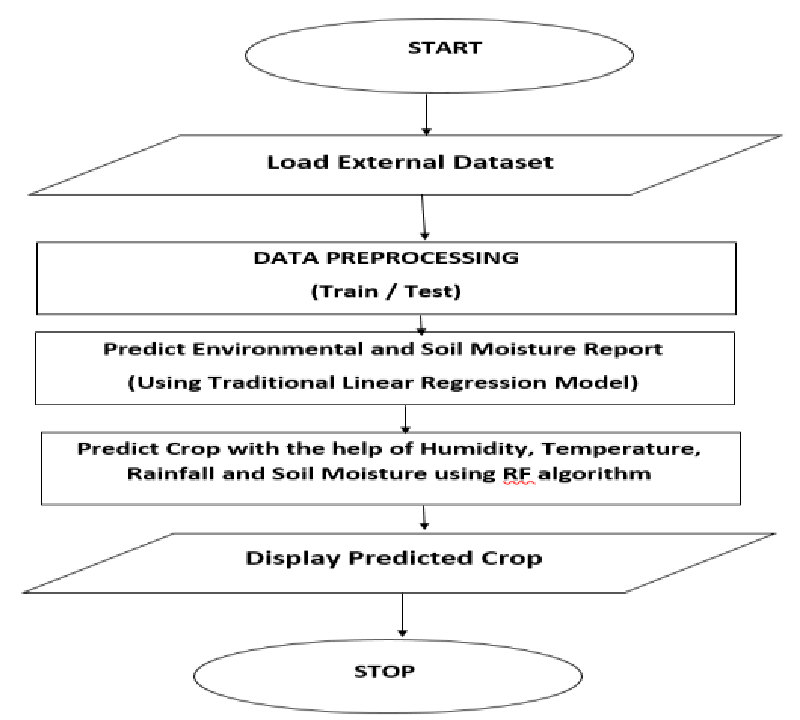
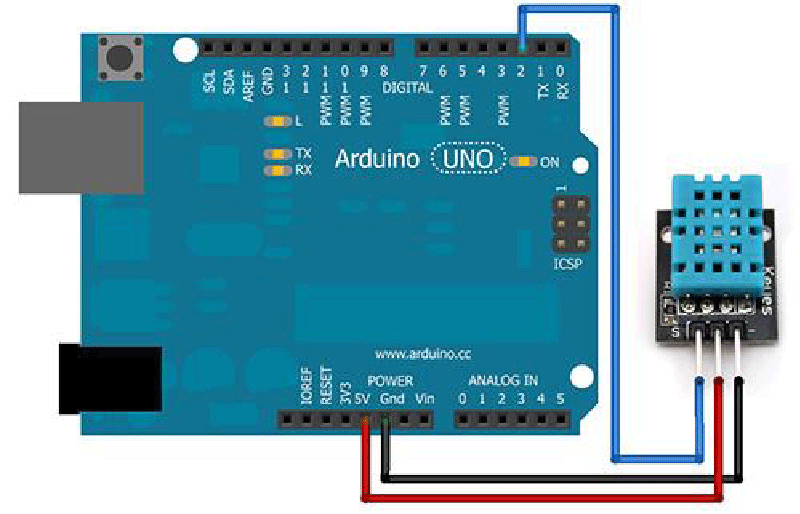
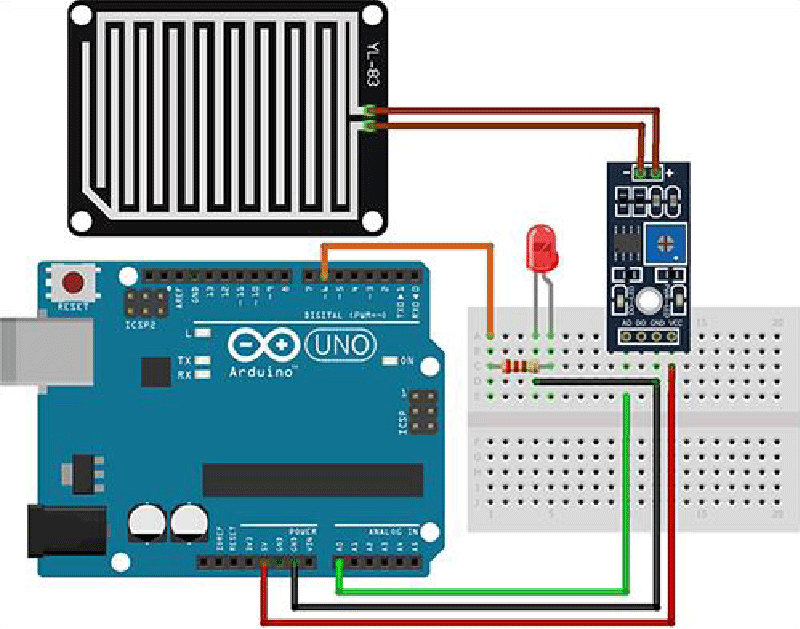
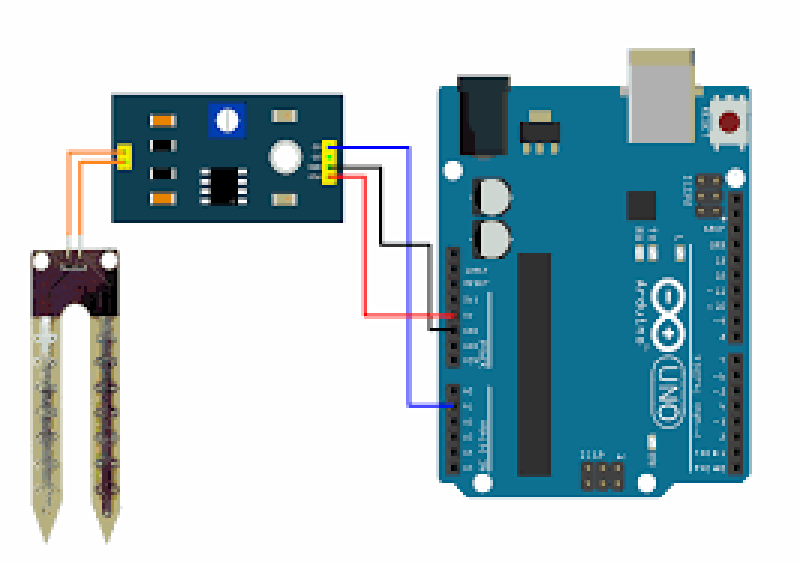
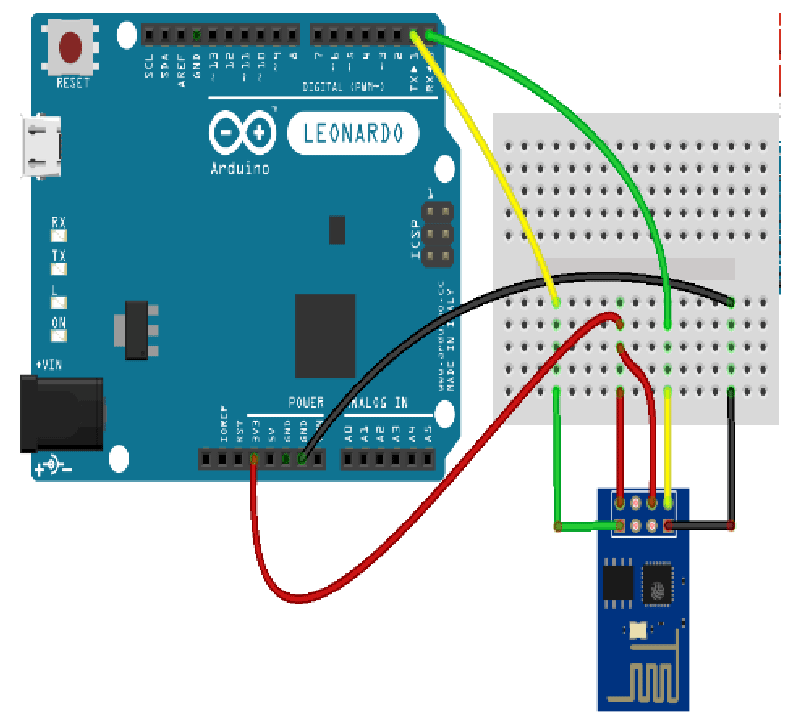
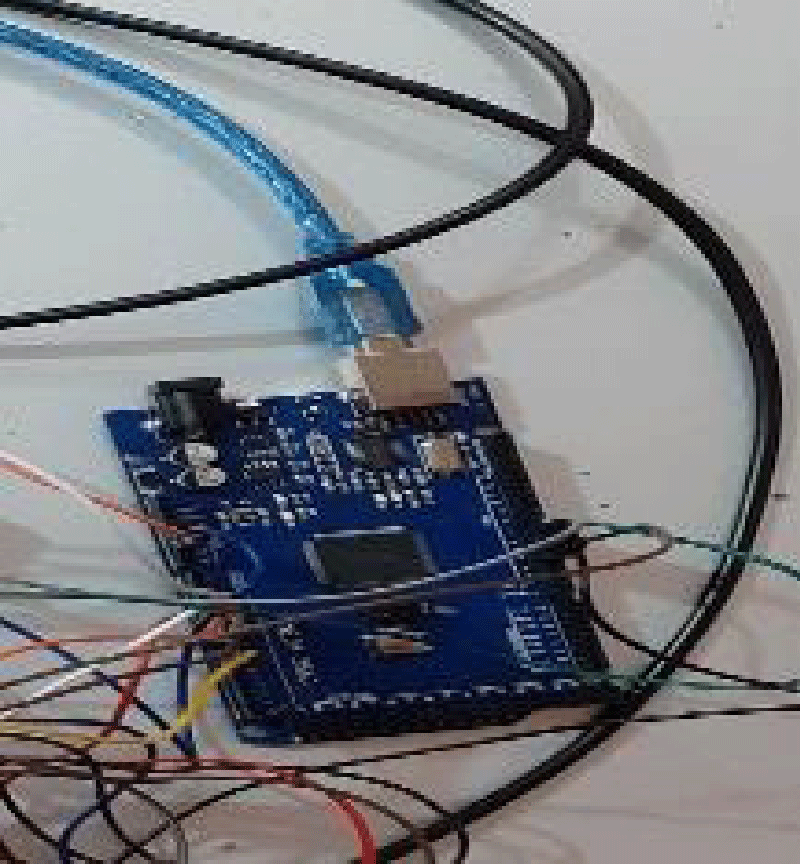
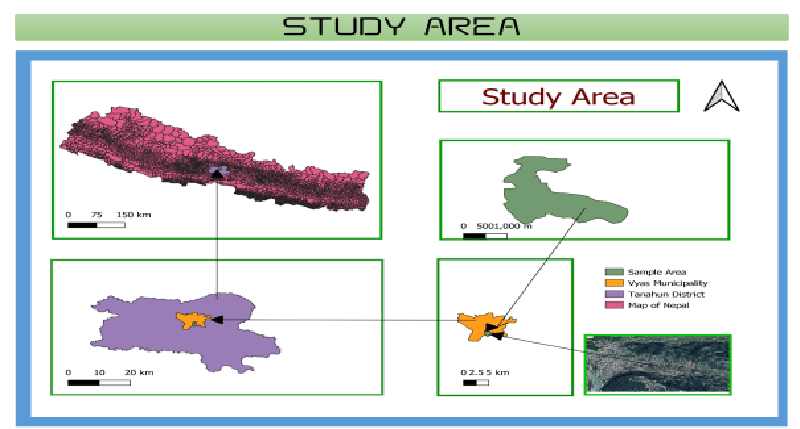
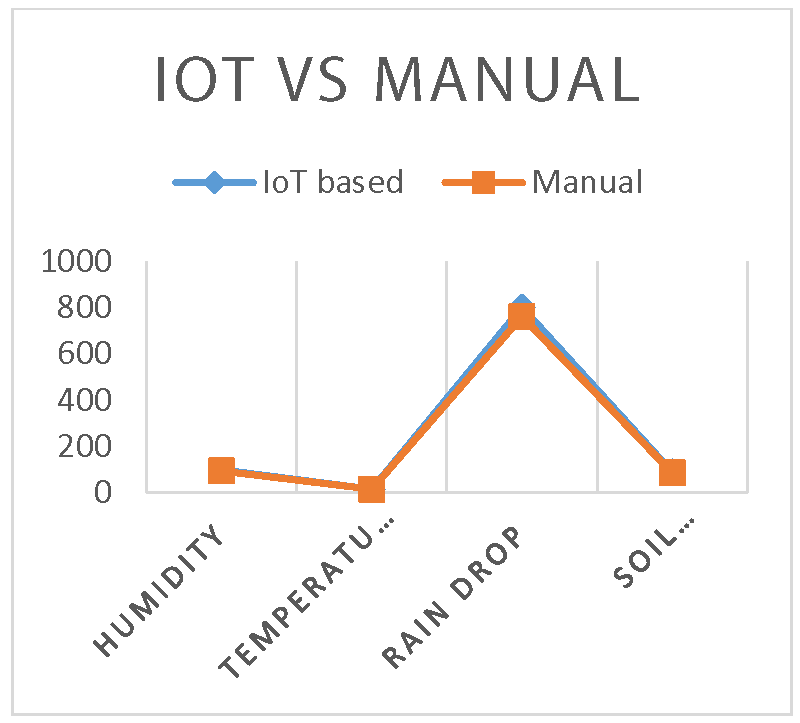
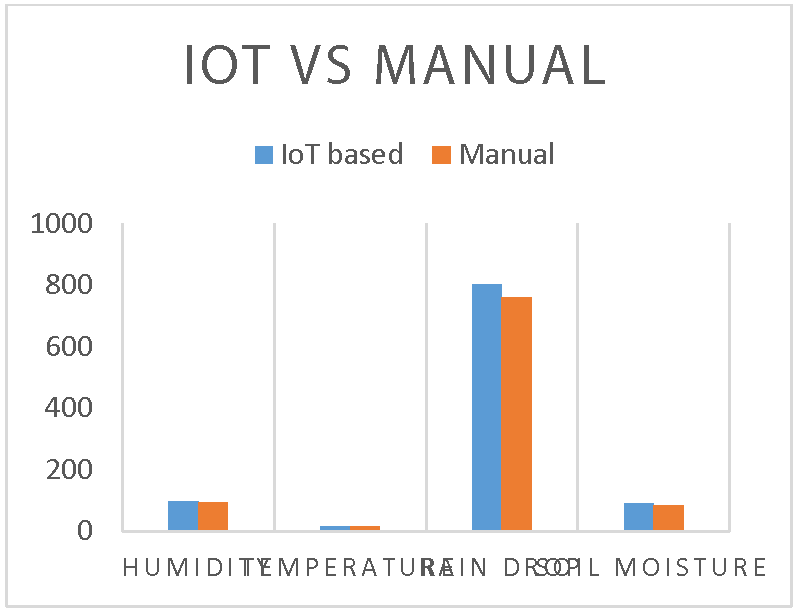
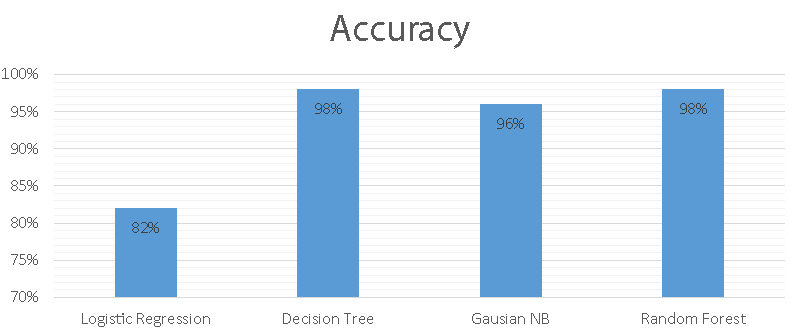
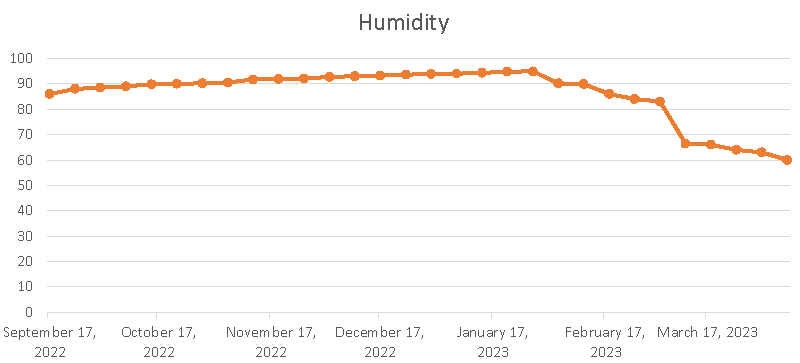
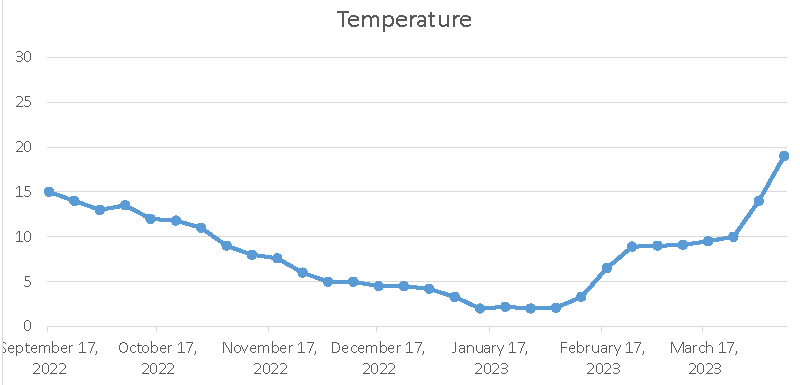
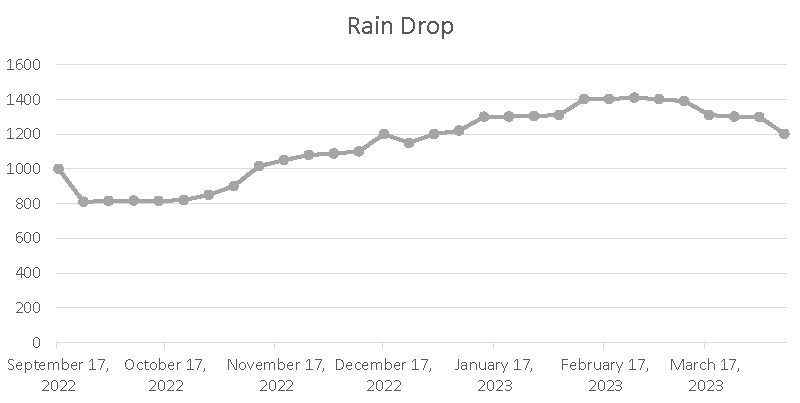



 Save to Mendeley
Save to Mendeley
